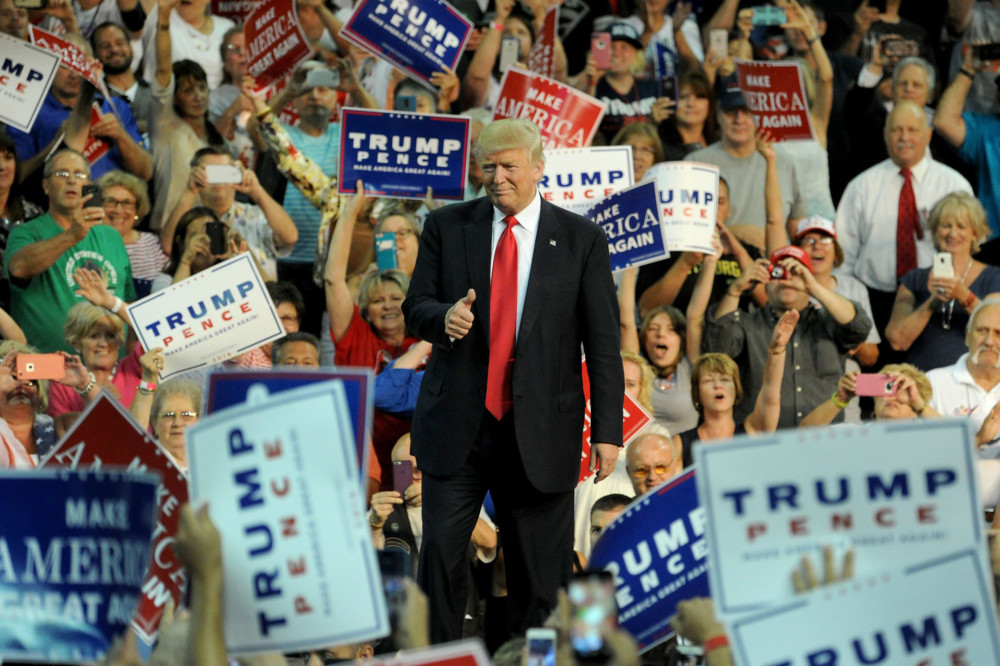By Simone Pathe
CQ-Roll Call
WWR Article Summary (tl;dr) Both Democrats and Republicans say they are increasingly using women for voice-overs in political advertising. Consultants say that choosing between men or women in campaigns today often has less to do with specific gender roles and more to do with creating a spot that will break through.
WASHINGTON
In Donald Trump’s first general election ad, a baritone voice tells viewers that Hillary Clinton’s America “is more of the same, but worse.”
“Donald Trump’s America is secure,” the male narrator says, with bravado.
One of the most famous attack ads, the 1988 Willie Horton ad run by supporters of Republican presidential nominee George H.W. Bush against Democratic rival Michael Dukakis, also featured just one voice.
The male narrator began by announcing the subject he was about to explain, “Bush and Dukakis on crime”, before commencing, over a series of still shots, to portray Dukakis as soft on crime.
It’s been a long tradition in both political and commercial advertising that men command authority, even in a voice-over.
Today’s political advertising still relies on the male voice as an authority. And to that extent, ad-makers admit it’s still somewhat sexist.
“As an industry, we have a hard time changing over from standard practice,” one Democratic media consultant said.
“We’ve fallen into habit on that,” GOP ad-maker Ben Burger said about the use of men’s voices to convey authority. “But I don’t think those are rules that are etched.”
Both Democrats and Republicans say they are increasingly using women for voice-overs, recognizing that their voices can be just as effective.
Choosing between men or women in voice-overs today often has less to do with specific gender roles, consultants say, and more to do with creating a spot that will break through.
“A lot of people still do use men, but I don’t think it’s any more effective,” Democratic strategist Jon Vogel said. He’s found that female voice-overs stand out because there are fewer of them.
“Our job is to separate ourselves from what else might be out there,” Democratic media consultant Ann Liston said.
Several factors play into making the male-female decision.
The selection of a narrator can be dictated by “the audience, the message we’re delivering, the look and feel of the spot, the time that it’s airing and if there are a lot of female voice-overs in that marketplace,” Liston said.
“There are no sacrosanct rules and if there are, I don’t think, creatively, you’re being as open as possible,” Burger said.
One factor that’s always taken into account, though, is the gender of the candidate.
If a female candidate is speaking in a commercial, it could be confusing to have another woman narrating.
When creating an ad for Florida Democrat Val Demings, Liston said she used a male African-American narrator to set up a contrast to Demings, the first female police chief in Orlando. Sometimes, it’s just about “having a bit of gender balance,” Liston said.
buy ventolin generic buy ventolin online no prescription
Distinct gender roles persist, however. Women’s voices are still used to address so-called women’s issues. Republican ad-maker Bob Kish says he would use a female voice-over to talk about education or breast cancer, for example.
Democrats, too, say that it often makes sense to appeal to a certain demographic by using a narrator who is a part of it.
In a 2014 ad from then-Sen. Mark Udall of Colorado, a female voice attacked his Republican opponent Cory Gardner for “promoting harsh anti-abortion laws.”
Men often narrate ads with national security messages, Burger said.
“But if you move that to personal security and community security, and you’re targeting families,” it’s common to hear more from women, he added.
“That doesn’t mean there’s any science behind that,” a Democratic ad-maker said. “There’s zero evidence that to speak to female voters one needs to use a female narrator.”
Democrats and Republicans agree that women are also used to soften attack ads, “to take the edge off,” Kish said.
In a new ad not yet posted on his campaign YouTube page, Arizona Sen. John McCain hits his GOP primary opponent, Kelli Ward, with a female narrator. “In a dangerous world, Arizona can’t afford Kelli Ward in the Senate,” the narrator intones.
The use of female voices in attack ads may be especially strategic when the target is a female candidate. “So it doesn’t sound like a man thuggishly hitting her,” a Democratic media consultant said.
He said he expects to see a lot of attack ads narrated by women in the New Hampshire Senate race between Republican incumbent Sen. Kelly Ayotte and Democratic Gov. Maggie Hassan.
A Senate Majority PAC ad from March tying Ayotte to Donald Trump used a female voice.
Kish and Burger both pointed to old focus-group research that found that men’s voices appeal to both men and women. But female voices “tend to get more of an honest response,” Kish said. Men see female voices as “someone who’s not lying to them,” he added.
A favorite female voice talent among Republicans was the late Betsy Ames, who mocked former Vice President Al Gore for his alleged claim that he invented the internet. “She could do anything,” Burger said, noting her ability to narrate both positive and negative ads.
It’s not unusual for ad-makers to stick with narrators they like. In fact, Liston said she often knows who made an ad just based on the narrator.
But voice-overs can’t make or break an ad if the message doesn’t work.
“The narrator will help polish that poop sandwich,” but if the message is off, Burger said, the voice doesn’t matter.
In fact, Burger has seen a shift in the last two cycles toward more ads where the candidate speaks directly to the camera.
For one thing, it’s cheaper.
But in an era of personality-driven campaigns, it also gives voters the ability to “touch and feel who they’re voting for,” he said.














































































































































































































































































































































































